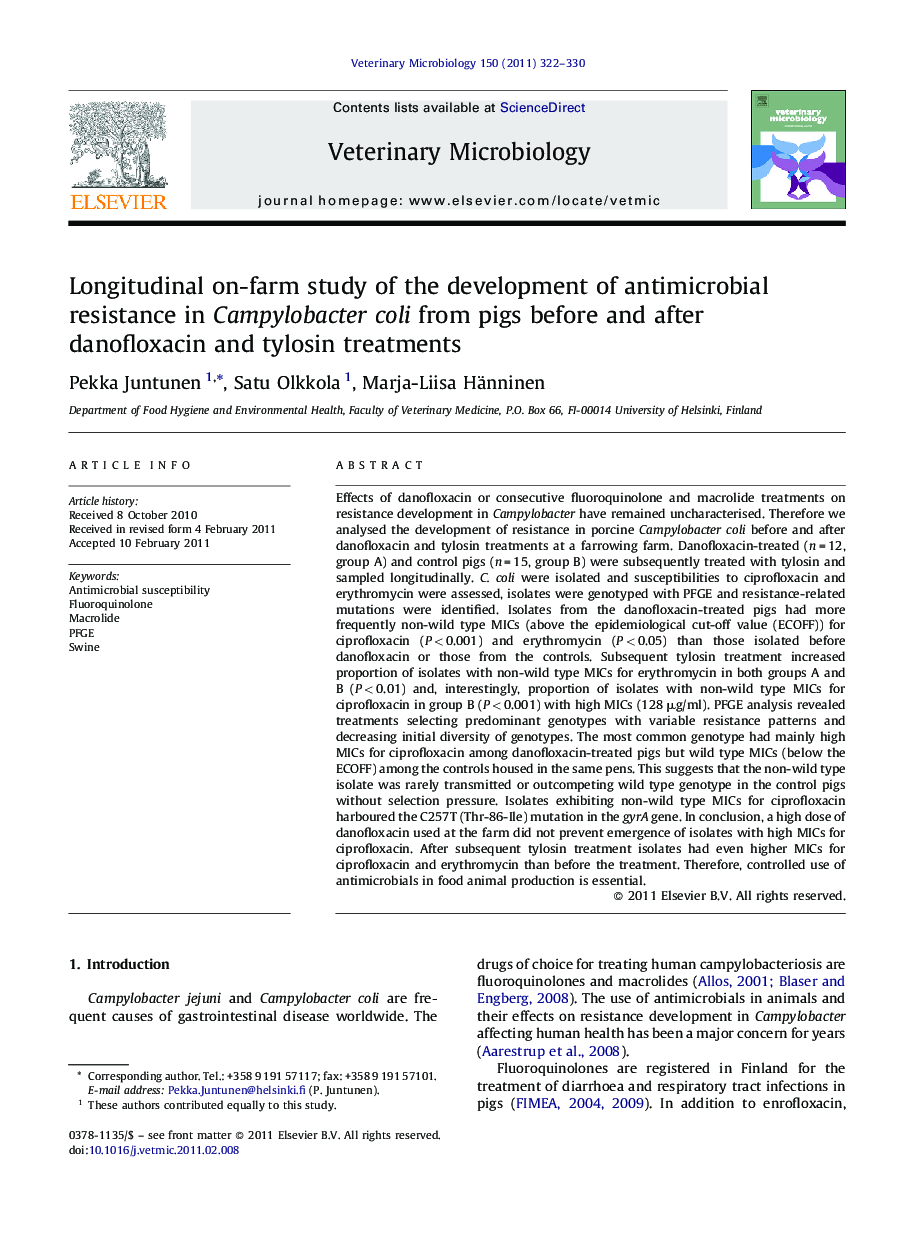| Article ID | Journal | Published Year | Pages | File Type |
|---|---|---|---|---|
| 5801396 | Veterinary Microbiology | 2011 | 9 Pages |
Effects of danofloxacin or consecutive fluoroquinolone and macrolide treatments on resistance development in Campylobacter have remained uncharacterised. Therefore we analysed the development of resistance in porcine Campylobacter coli before and after danofloxacin and tylosin treatments at a farrowing farm. Danofloxacin-treated (n = 12, group A) and control pigs (n = 15, group B) were subsequently treated with tylosin and sampled longitudinally. C. coli were isolated and susceptibilities to ciprofloxacin and erythromycin were assessed, isolates were genotyped with PFGE and resistance-related mutations were identified. Isolates from the danofloxacin-treated pigs had more frequently non-wild type MICs (above the epidemiological cut-off value (ECOFF)) for ciprofloxacin (P < 0.001) and erythromycin (P < 0.05) than those isolated before danofloxacin or those from the controls. Subsequent tylosin treatment increased proportion of isolates with non-wild type MICs for erythromycin in both groups A and B (P < 0.01) and, interestingly, proportion of isolates with non-wild type MICs for ciprofloxacin in group B (P < 0.001) with high MICs (128 μg/ml). PFGE analysis revealed treatments selecting predominant genotypes with variable resistance patterns and decreasing initial diversity of genotypes. The most common genotype had mainly high MICs for ciprofloxacin among danofloxacin-treated pigs but wild type MICs (below the ECOFF) among the controls housed in the same pens. This suggests that the non-wild type isolate was rarely transmitted or outcompeting wild type genotype in the control pigs without selection pressure. Isolates exhibiting non-wild type MICs for ciprofloxacin harboured the C257T (Thr-86-Ile) mutation in the gyrA gene. In conclusion, a high dose of danofloxacin used at the farm did not prevent emergence of isolates with high MICs for ciprofloxacin. After subsequent tylosin treatment isolates had even higher MICs for ciprofloxacin and erythromycin than before the treatment. Therefore, controlled use of antimicrobials in food animal production is essential.
